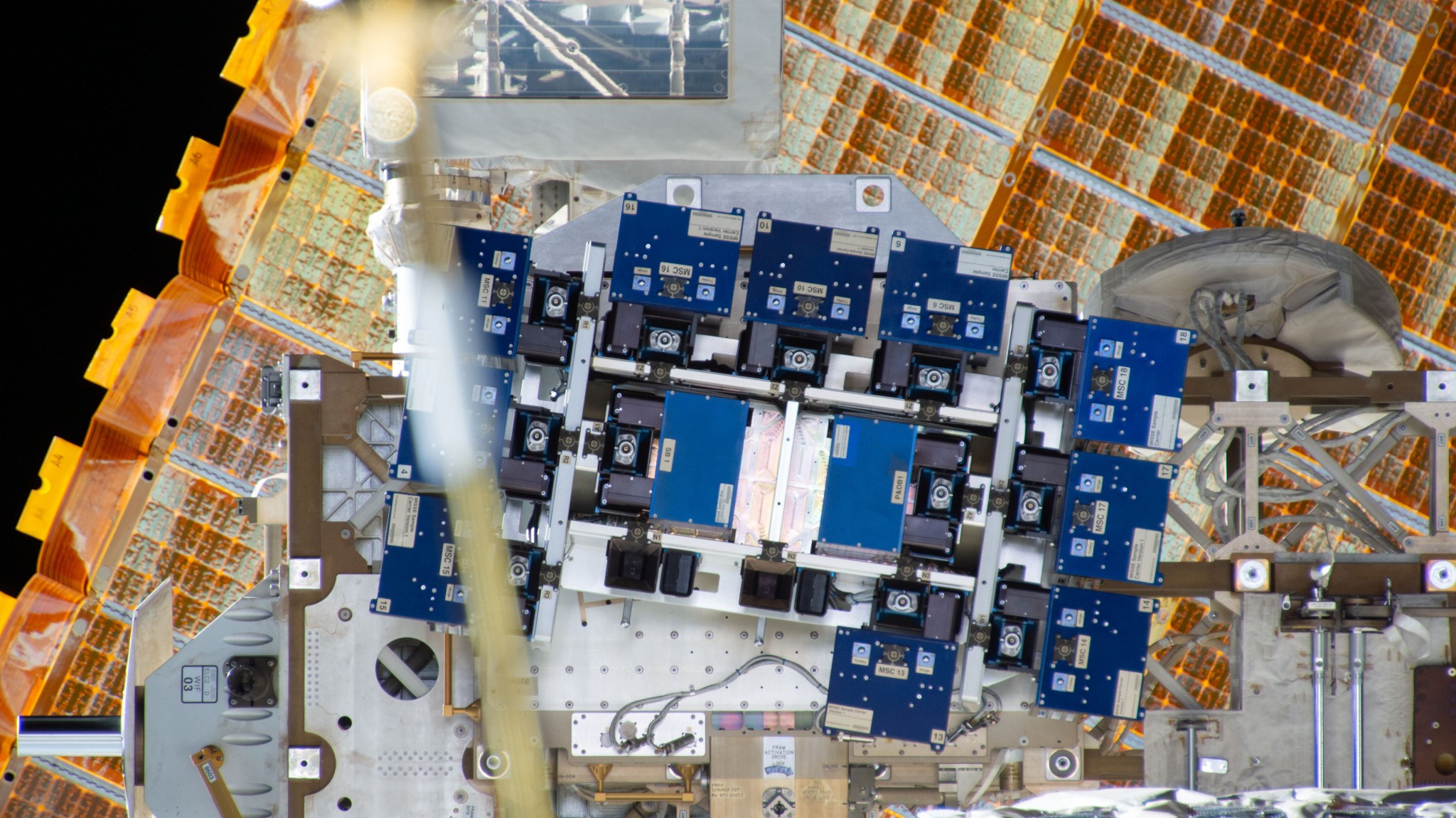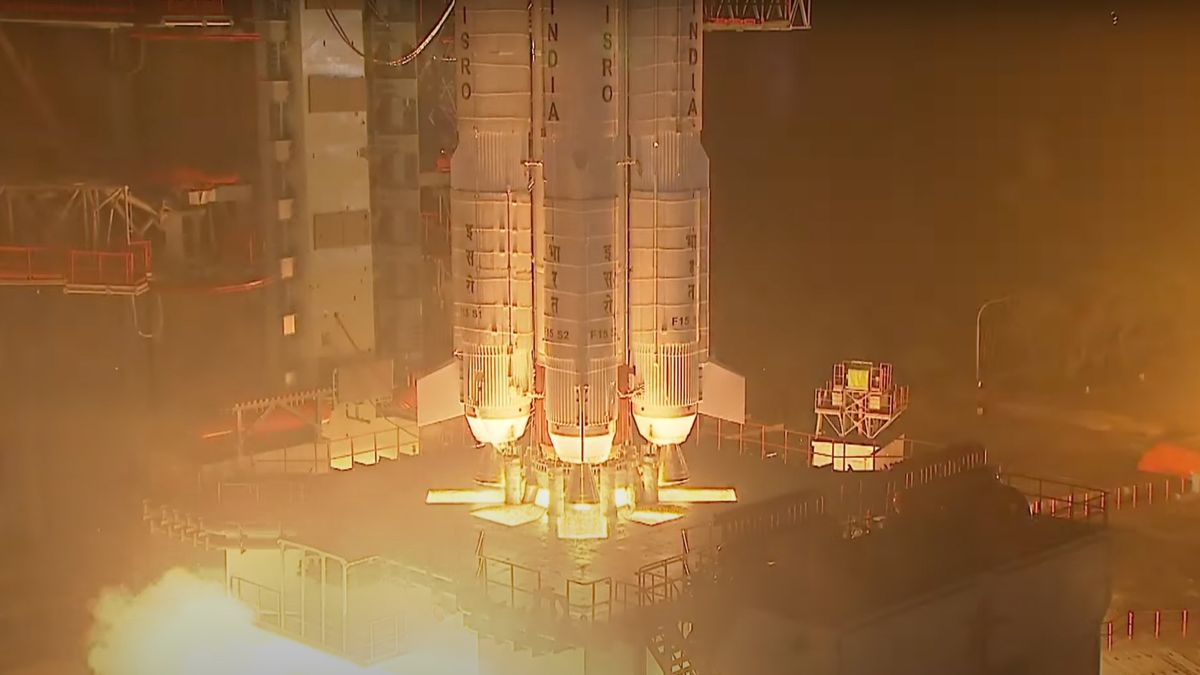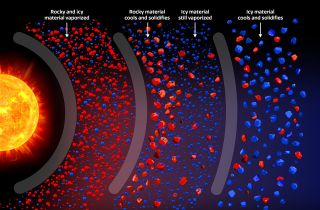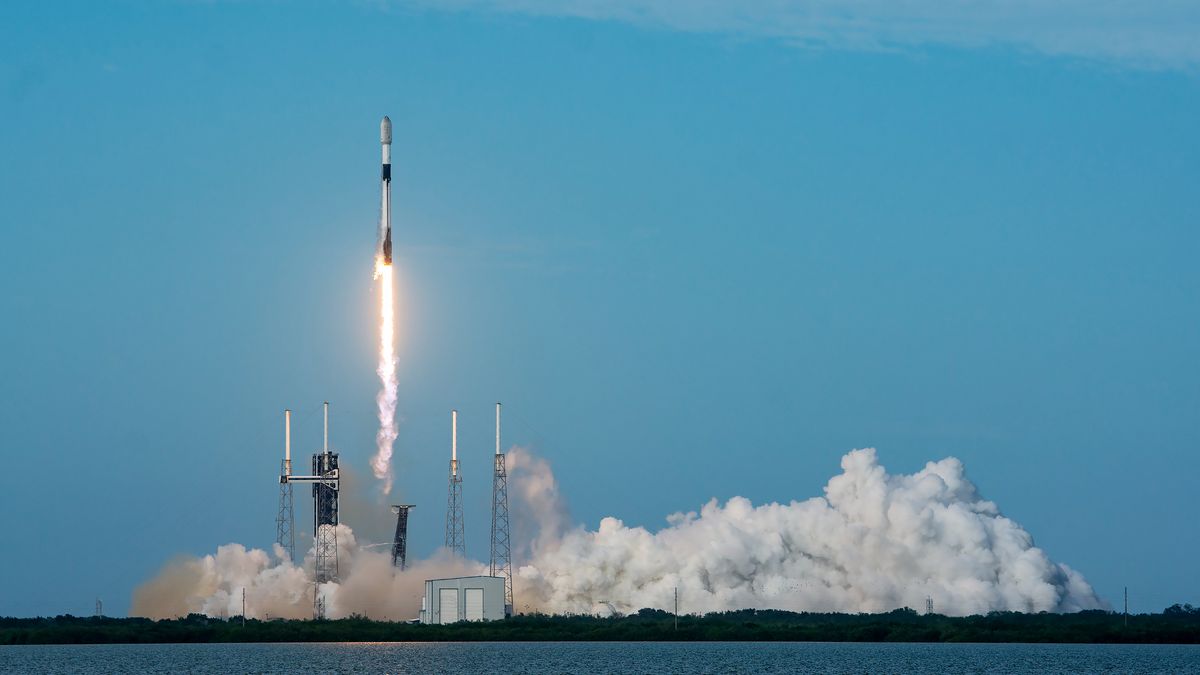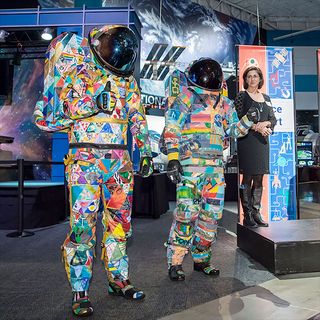Seeds survive space A close-up view of the Materials International Space Station Experiment hardware housing materials for exposure to space. NASA Researchers found that plant seeds exposed to space germinated at the same rate as those kept on the ground. This finding shows that plant seeds can remain viable during long-term space travel and plants could be used for food and other uses on future missions. Materials International Space Station Experiment-14 exposed a variety of materials to space, including 11 types of plant seeds. The work also evaluated the performance…
Read MoreMonth: February 2025
Newly-launched Indian satellite left stranded by propulsion problem
India just launched its first mission of 2025. The Indian Space Research Organisation‘s (ISRO) Geosynchronous Satellite Launch Vehicle (GSLV) lifted off from Satish Dhawan Space Centre on schedule today at 7:53 p.m. EST (0053 GMT and 6:23 a.m. local time on Jan. 29). It was the 100th launch overall from the storied spaceport, which lies on the barrier island Sriharikota, off India’s southeastern coast. The first orbital liftoff from the site occurred in August 1979, according to The Hindu. NVS-02 was expected to take up a position along the geostationary…
Read MoreStacking Artemis II
Engineers and technicians with NASA’s Exploration Ground Systems Program prepare to lift the left center center booster segment shown with the iconic NASA “worm” insignia for the agency’s SLS (Space Launch System) rocket to the Vehicle Assembly Building at NASA’s Kennedy Space Center in Florida on Friday, Jan. 24, 2025.
Read MoreHow Does the Sun Behave? (Grades K-4)
3 Min Read How Does the Sun Behave? (Grades K-4) This article is for students grades K-4. The Sun is a star. It is the biggest object in our solar system. The Sun is about 93 million miles away from Earth and about 4.5 billion years old. The Sun affects Earth’s weather, seasons, climate, and more. Let’s learn about how the Sun behaves. Why is the Sun warm and bright? The Sun is a giant ball made of hydrogen and helium gases. Deep in the center of the Sun, hydrogen…
Read More‘Roasting marshmallow’ exoplanet is so hot, it rains metal. How did it form?
Astronomers may have inadvertently complicated the mystery of how strange “roasting marshmallow” planets form. Using the Gemini South telescope, researchers found that the “hot and puffy” ultra-hot Jupiter planet WASP-121b may have formed closer to its star than previously believed, challenging what we know about how planets form. Since the discovery of the first planet outside the solar system in the mid-1990s, the catalog of extrasolar planets, or “exoplanets,” has grown to over 5,000 entries. Many of these exoplanets are like nothing found in our solar system. The hot and…
Read MoreStation Nation: Meet Tandra Gill Spain, Computer Resources Senior Project Manager in the Avionics and Software Office
For astronauts aboard the International Space Station, staying connected to loved ones and maintaining a sense of normalcy is critical. That is where Tandra Gill Spain, a computer resources senior project manager in NASA’s Avionics and Software Office, comes in. Spain leads the integration of applications on Apple devices and the hardware integration on the Joint Station Local Area Network, which connects the systems from various space agencies on the International Space Station. She also provides technical lead support to the Systems Engineering and Space Operations Computing teams and certifies…
Read MoreSpaceX launching 21 Starlink satellites from Florida on Feb. 3
SpaceX is set to launch another batch of Starlink satellites to orbit from Florida’s Space Coast early Monday morning (Feb. 3) A Falcon 9 rocket carrying 21 Starlink spacecraft, including 13 with direct-to-cell capability, is scheduled to lift off from Cape Canaveral Space Force Station Monday during a four-hour window that opens at 3:54 a.m. EST (0854 GMT). SpaceX will livestream the action via its X account, beginning about five minutes before launch. If all goes according to plan, the Falcon 9’s first stage will return to Earth about eight…
Read MoreA year in isolation: 366-day mock moon mission wraps up in Russia
On Nov. 14, 2024, the Institute of Biomedical Problems (IBMP) of the Russian Academy of Sciences marked the successful completion of SIRIUS-23, a year-long biomedical isolation experiment simulating the conditions of deep-space travel and lunar surface operations. For 366 days, a crew of six analog astronauts lived and worked in a sealed environment, a meticulously controlled Earth-based stand-in for interplanetary missions of the future. The SIRIUS (Scientific International Research in Unique terrestrial Station) project, launched in collaboration with NASA’s Human Research Program and the IBMP in 2017, had previously conducted…
Read MoreAstronaut’s mission ‘back to Earth’ lands on colorful spacesuit patch
A former NASA astronaut who has made it her mission to promote the healing power of art and the need to protect our planet has inspired a new, limited-edition collectible with its own complementary cause. Nicole Stott, who was the first person to paint with watercolors in space, returned from the International Space Station (ISS) with a greater appreciation for saving our planet. She also had an idea for how to encourage pediatric cancer patients by involving them in a worldwide space art project. Now another creative effort has embraced…
Read MoreSpaceX launches 22 Starlink satellites to orbit from California (video)
SpaceX launched another batch of its Starlink internet satellites from California today (Feb. 1). A Falcon 9 rocket carrying 22 Starlink spacecraft lifted off from Vandenberg Space Force Base at 6:02 p.m. EST (2302 GMT). The Falcon 9’s first stage returned to Earth about eight minutes after liftoff as planned, touching down in the Pacific Ocean on the SpaceX drone ship “Of Course I Still Love You.” The first stage of a SpaceX Falcon 9 rocket rests on the deck of a drone ship shortly after launching 22 Starlink internet…
Read More